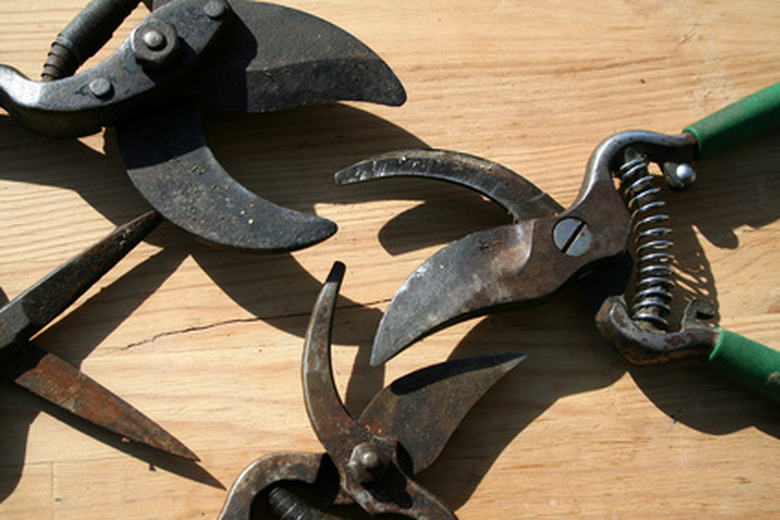How To Prune Mahonia
Things Needed
- Pruning shears
- Loppers
Mahonia is a genus of flowering and fruiting evergreen shrubs with more than 70 species in it, according to Floridata. Native to China, the shrubs thrive in USDA zones 6 through 9 and do not require pruning for health or performance, save to remove dead or damaged tissues. The shrub can tolerate pruning, and the form of the shrub can be altered considerably according to your taste and to suit the planting site. According to Purdue University, any significant pruning for shape or size should be conducted in the early spring before new growth appears.
Step 1
Remove any damaged, dead, diseased, broken or otherwise problematic branches or foliage throughout the see year as you see it. Cut back to healthy tissues, down to the parent branch or down to the crown of the plant, whichever maintains the natural form of the shrub better.
Step 2
Create a more formal, specimen shrub with one or just a few trunks by removing the unwanted stems down at the crown of the plant, just at or just below the soil line. This should be done in the early spring before new growth appears and as needed to maintain the effect.
- Mahonia is a genus of flowering and fruiting evergreen shrubs with more than 70 species in it, according to Floridata.
- Native to China, the shrubs thrive in USDA zones 6 through 9 and do not require pruning for health or performance, save to remove dead or damaged tissues.
Step 3
Encourage bushiness in the shrub by removing several of the longest branches down to the soil line each spring. Multiple new branches will emerge in their place, filling out the shrub.
Step 4
Create a lighter, airier appearance by thinning several lateral branches each spring. This will increase the distance between laterals, improving sight lines, showcasing the arching branches and lightening the appearance of the shrub.
Step 5
Reduce the overall size of the shrub by pruning the branch tips, following the natural line of the shrub. Use this approach only when necessary since it can alter the form of the shrub irrevocably. Never remove more than 1/3 of the shrub's bulk in any single pruning session.
- Encourage bushiness in the shrub by removing several of the longest branches down to the soil line each spring.
- Reduce the overall size of the shrub by pruning the branch tips, following the natural line of the shrub.
Tip
Never deadhead the spent flowers because blue-colored fruits will develop on the stalk, and these are an important and favored food source for many species of birds.
